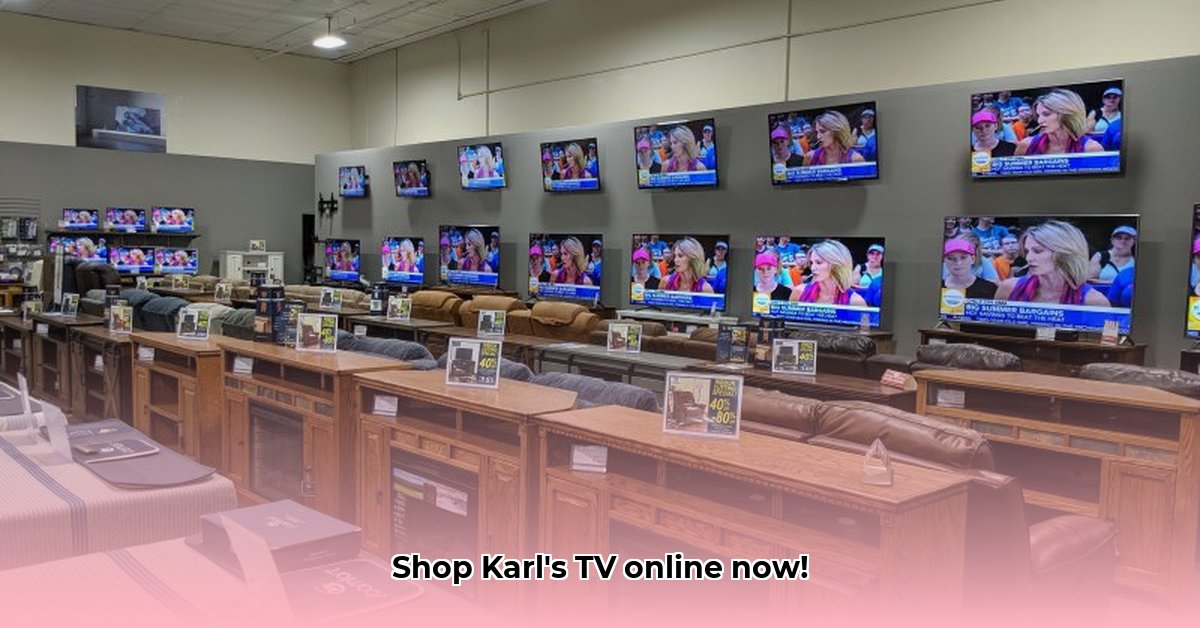
A Case Study in E-commerce Accessibility
Karl's TV & Appliance in Rapid City, South Dakota, demonstrates a commitment to accessibility, primarily through a dedicated customer service phone line. This approach, while providing personalized assistance, presents limitations in scalability and inclusivity within the broader context of e-commerce accessibility. This case study analyzes Karl's current strategy, explores the regulatory landscape and best practices, and proposes actionable improvements.
Karl's TV's Current Approach: Strengths and Weaknesses
Karl's dedicated phone line offers personalized support, particularly beneficial for complex product inquiries or users needing assistance navigating online shopping. This direct human interaction is a significant strength, allowing for detailed explanations and personalized recommendations. However, this model presents several challenges. Scalability is a major concern; increased customer volume could overwhelm the system. The reliance on a single communication channel excludes individuals who prefer or require alternative methods such as email or online chat. Furthermore, a phone-only system fails to address potential accessibility issues within the website itself, such as screen reader compatibility or keyboard navigation. This approach limits reach and potentially excludes a substantial portion of potential customers. Isn't it crucial for a business to reach everyone, regardless of their abilities or preferred communication methods?
The Legal and Ethical Context of E-commerce Accessibility
The Americans with Disabilities Act (ADA) mandates equal access to goods and services, including online businesses. A website's accessibility impacts not only legal compliance but also brand perception and market reach. Failing to provide accessible online shopping experiences not only risks legal action but also alienates a significant customer segment. How can businesses ensure that their digital storefront caters to everyone's needs?
Strategies for Enhanced Accessibility at Karl's TV
Karl's can significantly improve its e-commerce accessibility through a multi-faceted approach:
Comprehensive Website Audit: A professional accessibility audit identifies and addresses website usability issues. This includes ensuring compatibility with assistive technologies like screen readers, keyboard navigation, and sufficient color contrast. This evaluation should adhere to Web Content Accessibility Guidelines (WCAG) 2.1, ensuring a baseline level of digital inclusivity.
AI-Powered Accessibility Tools: AI offers efficient solutions for large-scale accessibility improvements. AI-driven alt text generation for product images significantly reduces the manual effort of describing each item. Similarly, automated captioning and transcription services improve access to video content. Automated tools are a cost-effective and efficient method of delivering broader accessibility.
Diversification of Communication Channels: Offering multiple communication channels, including live chat, email support, and even video relay services for sign language users, caters to diverse needs and preferences. This ensures everyone can easily connect with Karl's for assistance.
Employee Training: Equipping staff with disability awareness training and knowledge of assistive technologies empowers them to provide exceptional, inclusive customer service. This ensures that even phone-based interactions are as effective and accessible as possible.
Regular Accessibility Audits: Ongoing monitoring and testing are essential. Regular audits ensure that the website remains accessible and adapts to evolving best practices and technological advancements. Continual monitoring guards against new accessibility barriers from arising within the website code or content.
Actionable Recommendations and Next Steps
Karl's TV should adopt a phased approach:
Implement AI-powered alt text generation: This immediately improves access for visually impaired users, representing a significant and relatively quick win.
Enhance keyboard navigation and color contrast: These improvements enhance usability for a wide range of users, including those with motor impairments or visual disabilities.
Integrate a live chat function: This provides an immediate alternative to the phone line, catering to those who prefer text-based communication.
Conduct user testing: Regular testing with users with disabilities provides invaluable feedback and ensures the effectiveness of accessibility improvements.
Invest in employee training: Equipping staff with the knowledge to effectively assist users with diverse needs is crucial for creating an inclusive experience.
This strategic, phased implementation balances cost and impact, ensuring a continuous improvement cycle. The ultimate goal is a fully accessible online shopping experience. By embracing these recommendations, Karl's TV can set a standard for e-commerce inclusivity, enhancing its brand reputation and reaching a previously untapped market. Such a commitment to accessibility is not merely legally sound but also represents good business practice.
Key Takeaways:
- E-commerce accessibility is a business imperative, encompassing legal compliance, ethical responsibility, and market expansion.
- A multi-pronged approach combining technological solutions and human-centered design is most effective.
- Continuous monitoring and improvement are crucial for maintaining long-term accessibility.
- Investing in accessibility is an investment in a broader, more inclusive customer base.